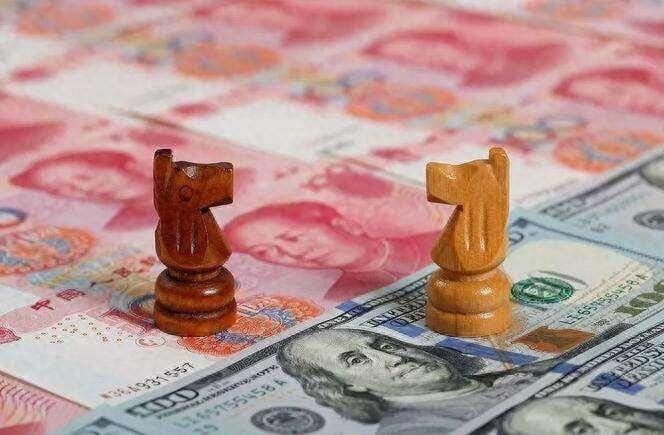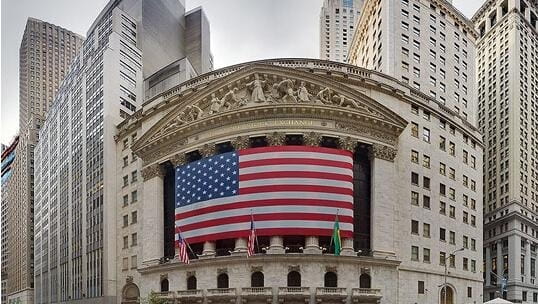Since the Federal Reserve announced a rate cut in September this year, the global economic and regional situations have become more confusing, with undercurrents surging, and the game behind it has become more intense than ever. However, the real risks have not yet erupted!
The situation on the Peninsula seems to be uneasy recently. It seems that there is a rhythm of trying to defeat the other party if they are not satisfied with each other. The current tense atmosphere on the Peninsula is also closely related to the Federal Reserve’s interest rate cut. From a deeper analysis, it is also an economic issue. The Peninsula is just playing the role of a pawn in the game between major powers.

The Federal Reserve announced a rate cut in September, and the world officially entered a cycle of rate cuts. This meant that the two-year rate hike by the United States had temporarily ended. It also meant that the dollar tide suffered a huge setback in this round of harvest, and suffered its first defeat in the financial war among major powers.
In the minutes of the Federal Reserve meeting released afterwards, it can be found that the debate within the Federal Reserve on whether to cut interest rates or not was almost unanimous, except for different opinions on whether to cut interest rates by 25 basis points or 50 basis points. In the end, Powell made the final decision to cut interest rates by 50 basis points.
In fact, there are many groups within the United States that are urging the Federal Reserve to cut interest rates, such as Wall Street bank capital. During the process of raising interest rates, several banks have gone bankrupt. Under pressure from the failure of external profiteering and internal interest rate cuts, the Federal Reserve finally compromised.
The Fed just didn't expect that the counterattack from the Federal Reserve would come so quickly. It had just cut interest rates on September 19, and just five days later, the Federal Reserve suddenly announced a series of major measures concerning the real estate and stock markets when all parties were unprepared.
This major move directly drove the stock market of Dongda to soar, causing a great shock around the world. At this time, the funds that the United States had siphoned away with great difficulty after two years of interest rate hikes began to stir, ready to leave and buy Dongda's assets.

As a result, the United States' financial counterattack began. In order to prevent capital outflow, the United States' first move was to sing bearish songs. It manipulated the indexes related to Dongda in the U.S. stock market, constantly sniped and frantically shorted them. For example, at around 3 a.m. on October 16, the U.S. stock market shorted 3 times and the FTSE China ETF soared 16%.
If the trend of the U.S. stock market had been followed, the Dongda stock market would have fallen by at least 4% on the 16th. If it continued to fall like this, market confidence would have suffered a severe blow. However, Dongda held on and finally maintained 3,200 without a big drop. The national team obviously made an effort, but not fully. After all, they still have to deal with the Americans' game in the future, and Dongda must ensure that it has enough bullets.
In fact, since the National Day, the Americans have never stopped short selling externally. Although the Tokyo stock market itself has many problems, it is also a fact that external short selling forces continue to interfere and disturb.
The second trick of the United States is to "correct" the data. If you want to say that it tampered with the data, that's fine. After the National Day, the United States successively released the non-farm data and CPI data for September. These two data are very important and directly affect whether the United States will cut interest rates in November, and also affect the US election in November.

Therefore, as expected, these two data are "far beyond expectations" and very eye-catching, giving people the feeling that the US economic performance is very strong. The release of these two data will lead to a further slowdown in the subsequent interest rate cuts in the United States. The interest rate cut in November was supposed to be 50 basis points, but now the market is betting on only 25 basis points.
The Federal Reserve made a sudden comeback and slowed down the interest rate cuts, which was equivalent to a shot in the arm for the funds remaining in the United States. During this period, the US dollar index soared and the RMB exchange rate fell. It was for this reason that the United States tried to guide funds from US stocks to US bonds, especially to prevent funds from flowing to Dongda.
The third tactic of the United States is to create a tense atmosphere around the University of Tokyo and prevent capital outflow.
After the 924 major move by the East, the Middle East was in a state of conflict again. Persia no longer just talked about it, but took direct action. Hundreds of rockets were fired at Israel. Persia took action at this critical moment, which was also part of the game between major powers.
Tokyo hopes that the United States will be deeply mired in the Middle East and unable to extricate itself, while the United States hopes that there will be constant friction around Tokyo and disrupt plans to bring funds back. So the Americans also began to act, and this led to the Peninsula Iron Box Crisis that we are seeing now.
Many things that happen around the world every day are not isolated incidents. Behind them are the shadows of big power games. If big countries don’t speak, small countries won’t move. As the US election draws closer, the game behind them will only intensify.
The United States recently released another data, showing that the New York Fed manufacturing index plummeted in October, from a sharp increase of 11% in September to a decrease of 12% in October, a drop of more than 20 percentage points, the largest drop since January this year, and the order index and shipments also plummeted.
Is this a sign of a strong economy? Did the Americans forget to revise the data? Perhaps the data is not important to them, so they just don’t bother to “revise” it.
In the past year, the United States' fiscal expenditure was 6.9 trillion US dollars and its fiscal deficit was 2.1 trillion US dollars, equivalent to a daily deficit of 6 billion US dollars. The interest to be paid has reached 1.8 trillion US dollars, setting a new record. The fiscal crisis and U.S. debt crisis are always looming over the United States.

However, the United States relies on government debt to drive economic growth. The "good-looking" non-farm data is also due to the substantial expansion of government employees, but the US fiscal revenue is not growing as fast as the debt. This model is unsustainable.
There are only two solutions. One is to continue to borrow on a large scale and continue to play the financial game of "borrowing new to repay old"; the other is to flood the market with money to dilute the debt, but flooding the market with money too quickly will accelerate capital outflow, and flooding the market with money will also be accompanied by the outbreak of financial crises. Every time the United States cuts interest rates, a global financial crisis will occur.
The real risks have not yet erupted, but various uncertainties are already on the way. The next BRICS summit in late October will discuss the BRICS currency payment system. The US election in early November is an even more uncertain factor. At the same time, there is also the Middle East crisis, tensions on the peninsula and the Russia-Ukraine conflict.
Therefore, external risks are still intensifying and there are many uncertainties. We still need to be conservative in investment and not act rashly. Some things do not happen suddenly, we just suddenly know about them.



